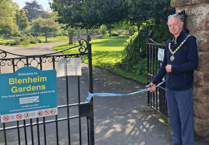A DISPUTE over the colour of roof slates on an important West Somerset public house has been settled by a Government-appointed planning inspector.
Dorset-based brewers Hall and Woodhouse bought the Old Ship Aground, next to Minehead Harbour, in 2021 and found it ‘badly needed’ to replace its roof tiles.
The company started to replace the tiles with larger and different colour ‘Westland Grey Green Slate’ before submitting a planning application for work on a listed building in a conservation area.
The former Somerset West and Taunton Council (SWT) refused permission and rejected a suggestion by the company to paint the tiles in a more acceptable colour.
SWT said the new tiles were ‘an incongruous feature’ and painting them would not help, and started enforcement proceedings to have the roof returned to its former tiling.
Now, planning inspector Peter Jarratt has upheld an appeal by Hall and Woodhouse and allowed ‘Westland Grey Green Slate’ to be used on the former hotel built in about 1880.
Mr Jarratt said the quayside pub was grade two listed and formed part of a group of buildings which contributed positively to the distinctive setting of the conservation area.
He said when he visited the site ‘the obvious newness of the replaced slates was particularly evident’.
However, their impact was lessened by the busy composition and blue colour wash of the front of the building.
Mr Jarratt said there was little uniformity in the colour of roof types of buildings in the conservation area and it was this variety which contributed positively to the character and appearance of the area.
He said SWT in refusing the Old Ship Aground slates had not specifically explained how they caused harm, particularly as from street level it was ‘extremely difficult to recognise any incongruity’.
Mr Jarratt said: “The replacement of the slates has generated critical responses from a number of local residents and from the Minehead Conservation Society, all of whom are clearly proud of the heritage of Minehead.
“However, some of the comments appear to relate more to anger at the approach to the re-roofing taken by the appellant and raise matters irrelevant to the determination of this appeal which, simply put, is whether the slates now in situ cause harm to the building or to the conservation area.”
He concluded the slates were appropriate and as they weathered they would enhance the building’s appearance.





Comments
This article has no comments yet. Be the first to leave a comment.